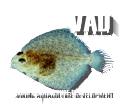
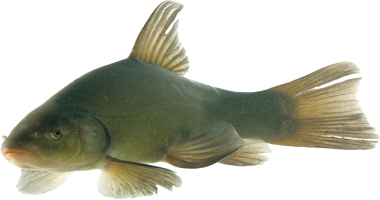
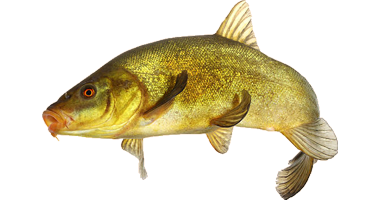
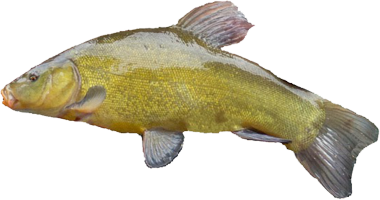



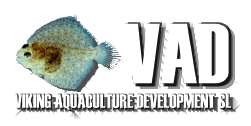

Aquaculture Species
Tench. Introduction
The Tench (Tinca Tinca L.) is a fish of the family of the cyprinids. It is a species of Siberian carp endemic to different areas of
Europe, of medium size that can reach 85 cm of total length and a maximum weight of 7.5 kg. The body is elongated with a short and
high caudal peduncle. Presents a pair of barbels in the corners of the lip. The scales are small being their number from 90 to 120
in the lateral line. The dorsal and pelvic fins have their convex dístal edges and the first of them has 8-9 branched radii, while
the anus has 7-8. The coloration is greenish, although it may vary depending on the medium where it lives.
Its characteristic habitat are lakes and warm freshwater ponds, with abundant vegetation and soft backgrounds. In some rivers of Spain, especially in the province of León the tenca can live with funds of stones and scarce aquatic vegetation, although in these cases it selects wells or zones with low speed of the current. Its diet is omnivorous, but feeds mainly on invertebrates, such as aquatic insects, bivalve molluscs and gastropods found at the bottom of ponds and rivers. It lacks stomach and the mouth connects directly to the intestine that measures 1.2 times the length of the body. In addition, it has abundant red musculature and a large caudal fin that indicates a large swimming bladder.
The Tench has a great tolerance to low water qualities, dissolved oxygen levels in the water very low and is able to withstand being out of the water for quite some time. It is diploid with a chromosome number 2n = 48, reproducing in areas of dense aquatic vegetation, fixing the eggs to the submerged vegetation. Presents a unique spawning period between May and August
The species is depredated by various introduced exotic species such as the Pike (Esox lucius) and the Perch (Micropterus salmoides). The presence of the American crab is also a threat factor since it increases the turbidity of the rivers and makes disappear some of the aquatic phanerogams that are used by this species as zones of refuge and reproduction. The transformation of rivers by hydraulic works and the contamination of them by discharges are also factors that contribute to the decline of the natural populations of the species.
The cultivation system defined as "traditional" has been practiced in Central Europe since the Middle Ages and in Spain since the sixteenth century, consists of the stocking of individuals of both sexes in shallow ponds and vegetation. The reproduction results in a mixture of adults and juveniles of various sizes that should be separated manually in the process of fishing. Adults can be disposed for sale while juveniles are moved to other ponds to continue their growth.
Its characteristic habitat are lakes and warm freshwater ponds, with abundant vegetation and soft backgrounds. In some rivers of Spain, especially in the province of León the tenca can live with funds of stones and scarce aquatic vegetation, although in these cases it selects wells or zones with low speed of the current. Its diet is omnivorous, but feeds mainly on invertebrates, such as aquatic insects, bivalve molluscs and gastropods found at the bottom of ponds and rivers. It lacks stomach and the mouth connects directly to the intestine that measures 1.2 times the length of the body. In addition, it has abundant red musculature and a large caudal fin that indicates a large swimming bladder.
The Tench has a great tolerance to low water qualities, dissolved oxygen levels in the water very low and is able to withstand being out of the water for quite some time. It is diploid with a chromosome number 2n = 48, reproducing in areas of dense aquatic vegetation, fixing the eggs to the submerged vegetation. Presents a unique spawning period between May and August
The species is depredated by various introduced exotic species such as the Pike (Esox lucius) and the Perch (Micropterus salmoides). The presence of the American crab is also a threat factor since it increases the turbidity of the rivers and makes disappear some of the aquatic phanerogams that are used by this species as zones of refuge and reproduction. The transformation of rivers by hydraulic works and the contamination of them by discharges are also factors that contribute to the decline of the natural populations of the species.
The cultivation system defined as "traditional" has been practiced in Central Europe since the Middle Ages and in Spain since the sixteenth century, consists of the stocking of individuals of both sexes in shallow ponds and vegetation. The reproduction results in a mixture of adults and juveniles of various sizes that should be separated manually in the process of fishing. Adults can be disposed for sale while juveniles are moved to other ponds to continue their growth.
Tench. Analysis and Production
VIKING AQUACULTURE DEVELOPMENT Ltd. Copyright © MADRID 2.018. All rights reserved.
